Cienega Seca Creek Trail Hike - July 26 2005
Part 1 - Tracks, Insects, Plants
As I prepared for today’s hike, I stuffed my brand-new Jansport
backpack (I love the multitudes of pockets they incorporate into the
design) with water, food, camera, Mr. Bunny, rock hammer, and ziploc
bags for collecting things. Besides the laminator, ziploc bags are the
greatest boon to naturalists who live in wet climates (like the Olympic
Peninsula of WA).
I didn’t get more than 100 feet from my residence when I stumbled
across these: |
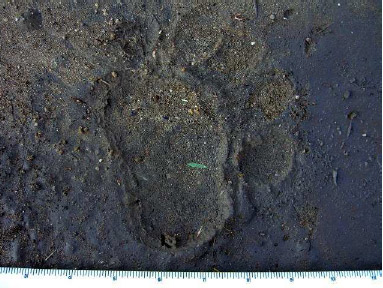 |
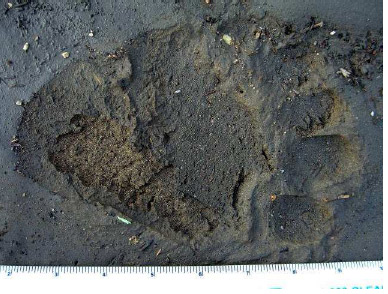 |
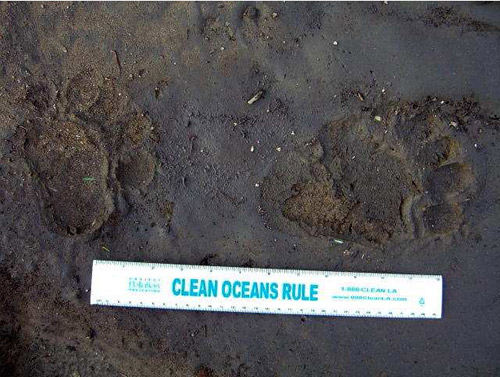 |
| I’m no good at tracking, but what else would these be but black
bear? |
| |
|
|
| |
| We have many rodents around here, including the Deer Mouse, Kangaroo
Rat, Western Grey Squirrel, CA Ground Squirrel, Golden Mantle Ground
Squirrel, Merriam Chipmunk, Dusky-Footed Wood Rat, and Valley Pocket
Gopher. |
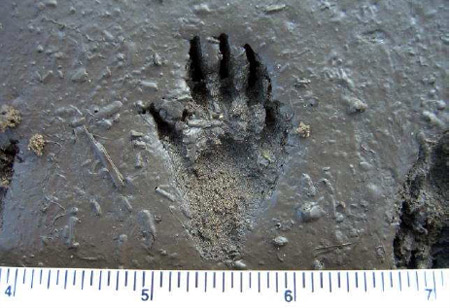 |
| |
Well, on to Cienega Seca Creek and its accompanying trail.
The trailhead, which is less than 200 feet from my residence. Notice the
Great Basin Sagebrush and the greener Rabbit Brush adorning the
trailside. The creek (8” wide at the moment) is to the right of the
trail. It ducks under Arroyo Willow shrubs for most of its journey to
the Santa Ana River. |
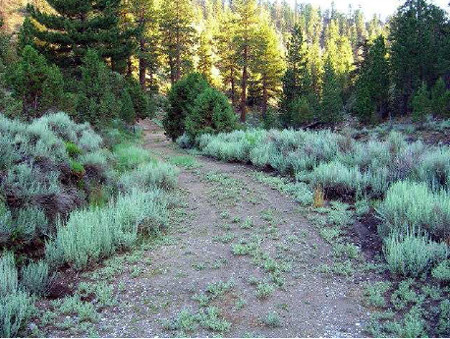 |
| |
Even though my new digital camera (Casio Exilim EX-Z750) cost nearly
$500 and sports a 7.2 megapixel capacity, my lack of photography
knowledge prevents me from taking focused pictures of small items, like
insects. In order for me to get this centipede and the following spider
picture to come out decently, I upped the resolution from the standard
“e-mail” pics I usually take and cropped the resulting focused-but-
“far-away” pics with Dell Image
Expert software. |
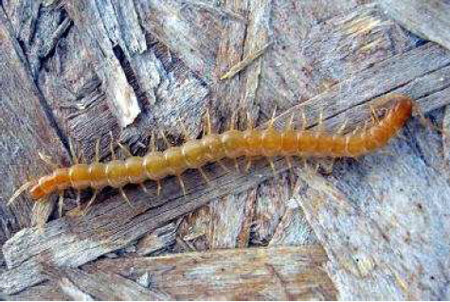 |
| |
| It's so cute! |
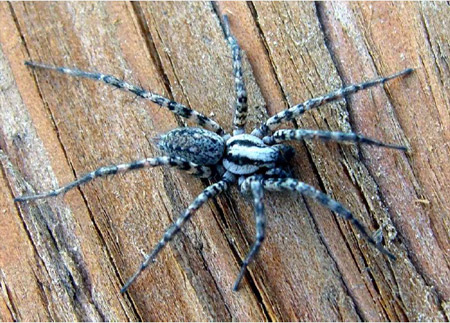 |
| |
| Termites? Reminds me of I-10… (Thank Gaia I never learned how to
drive) |
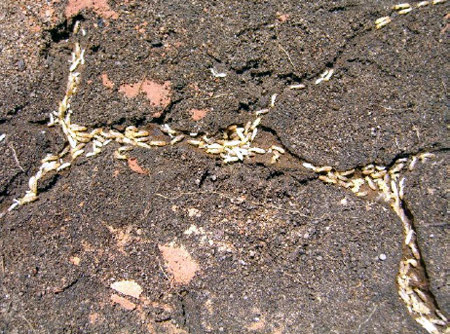 |
| |
| No, earwigs do not crawl into people’s ears. They have absolutely no
reason to… |
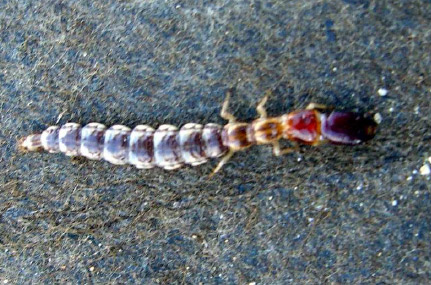 |
| |
| Jerusalem Cricket - Raw, they taste a bit like battery acid or
metal. Well, our sewer system is nearby… |
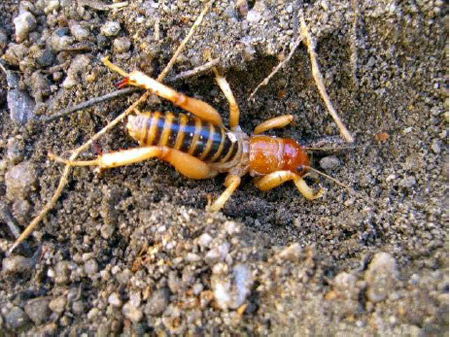 |
| |
| Botany, especially ethnobotany, fascinates me. It is wondrous that
there are so many useful plants wherever I roam. I’ve lived and taught
in intertidal, chaparral, oldgrowth forest, boreal forest, temperate
rainforest, foothill, sub-alpine, and desert environments. I’d estimate
that, in each of these biomes, approximately 95% of the local botanicals
are edible and/or medicinal, not to mention physically useful for tool
handles, friction fire, cordage, etc. I hope to put together an article
illustrating the usefulness of local plants soon. Juniperus
occidentalis var. australis (sierra juniper) berries |
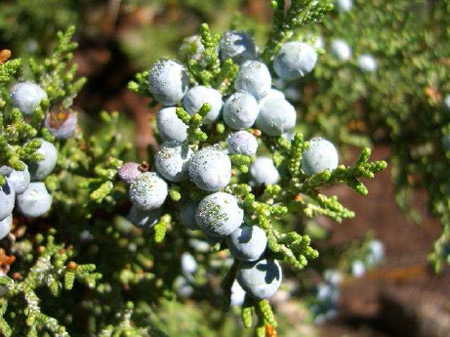 |
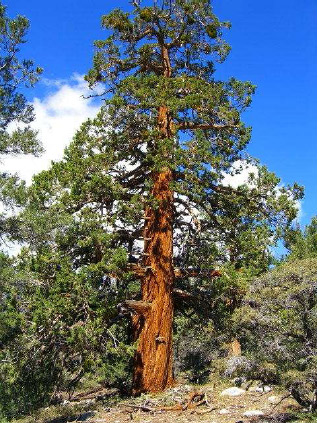 |
| |
| Pinus monophylla (pinyon pine) This is where commercial pine
nuts come from! |
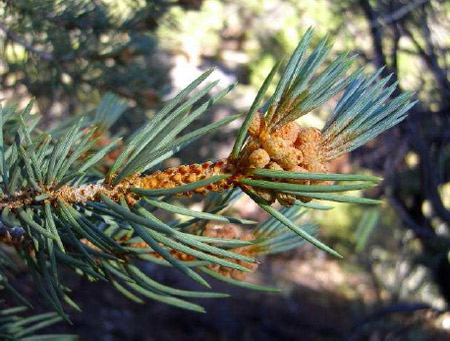 |
| |
| Penstemon labrosus (san gabriel beard's tongue) |
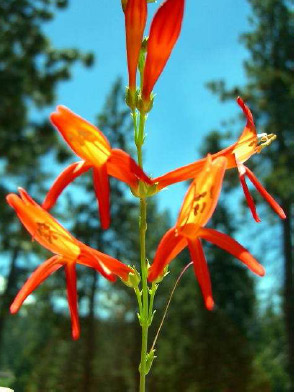 |
| |
| Urtica dioica (stinging nettle) Did you know that stinging
nettle stem juice is an effective remedy for the sting that the formic
acid-filled hairs induce? |
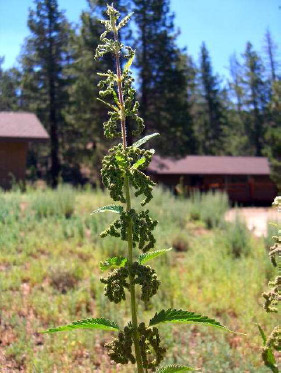 |
| |
| Correct me if I’m wrong, but I think this is Lomatium nevadense
(biscuit root). |
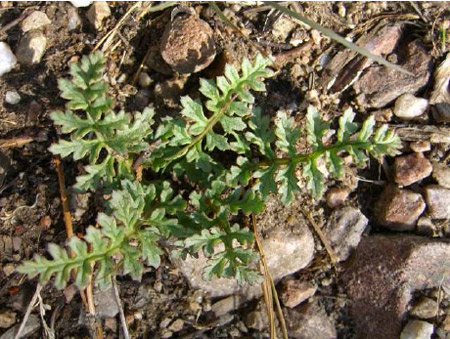 |
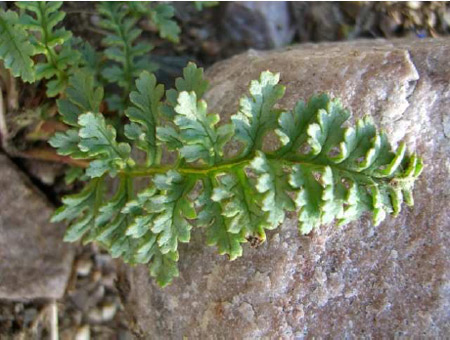 |
| |
| Monardella linoides (pennyroyal) grows wild around here. Rub
the foliage on your skin—an effective insect repellent. |
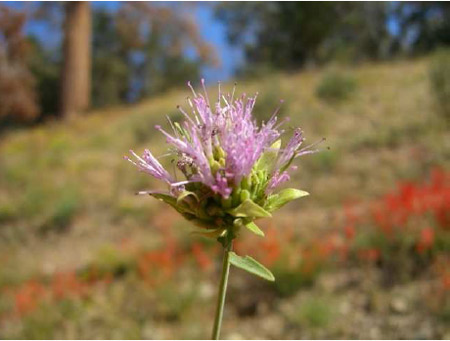 |
| |
| Stachys albens (Hedge Nettle or Wood Mint) |
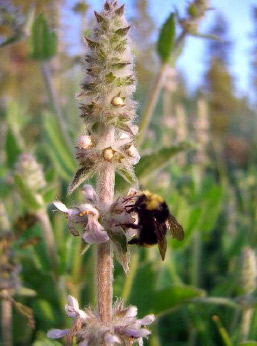 |
| |
| Part 2 will be a pictorial exposé on the
rocks one can meet along the trail… |
| |



